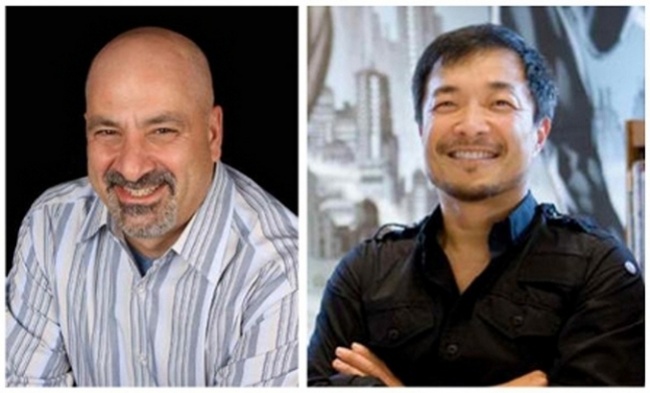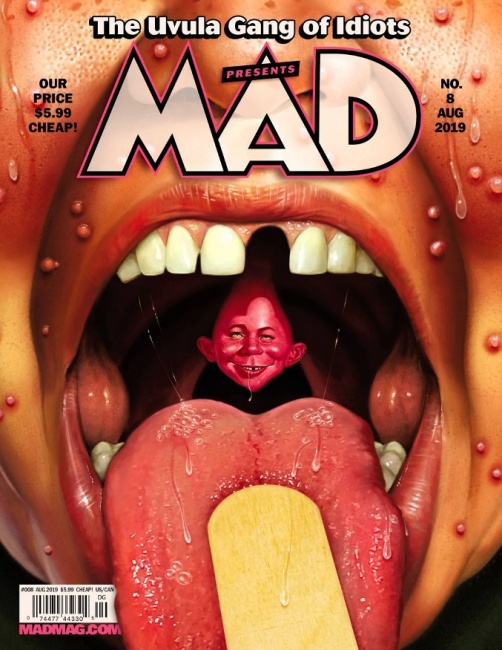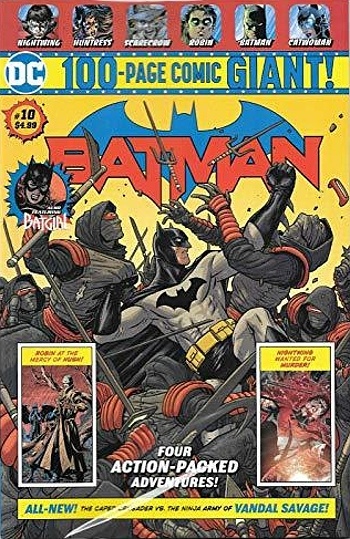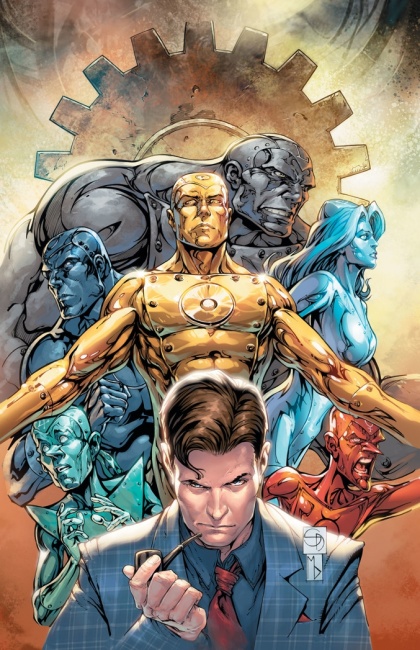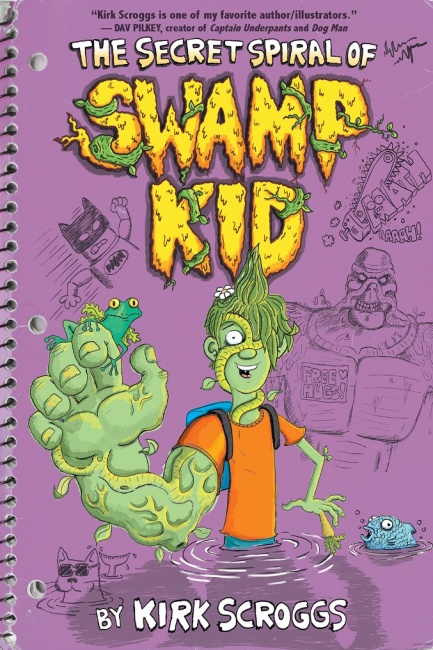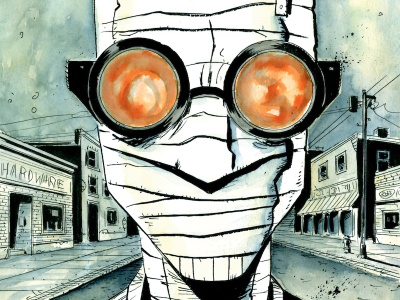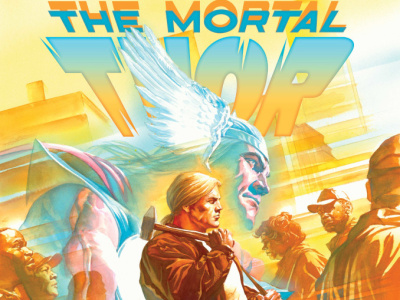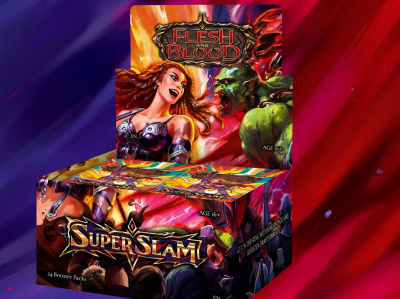We sat down with DC Publisher Dan DiDio and DC Publisher and Chief Creative Officer Jim Lee at San Diego Comic-Con to catch up on the rapid changes in the industry and at DC. In Part 2, we discuss DC's overall brand strategy, content trends, planned mass market expansion, and their top 2019 picks, In Part 1, we heard their diverging opinions on current market conditions, including digital, and discussed the future of DC Universe, the different DC logos identifying types of content, and the Mad Magazine decision.
We probably shouldn't have been, but we were surprised by the reaction to the Mad news (see "’Mad Magazine’ Ending Most New Material"). It's obviously a venerable brand that had a big role in people's childhoods. The short question is why is new Mad content being de‑emphasized?
DiDio: Let's go right to the core of it. There are two changes taking place. The first change is coming off the newsstand. The newsstand business is challenged. The sell‑through isn't enough to support the magazines on the shelf. It's no different than any other magazines coming off the shelf.
Where was it? It was mostly supermarkets or bookstores?
DiDio: It was supermarkets, airports, and similar locations. It's been a very challenging business to get anything into a newsstand these days. That's been a tough decision for us, but we still have the direct market to be able to put product out in on a non‑returnable basis, so it allows us to manage our material better. We also have a very strong subscription base for Mad Magazine. Between those two, it allows us to continue publishing.
Our choice right now, though, is to go primarily with mostly reprint material because we feel that the nostalgic material is really what people have been enjoying most, and we want to go back with again. There'll still be a smattering of original material in several of the books going forward. We have a plan that still pushes out for the next year, and we'll be reviewing how this strategy has worked over the next year to see whether or not we continue on moving past that.
Right now, we're still publishing. We'll still have new material. We'll still have the Mad 20. We will still have other things that people come to look forward to in Mad.
The biggest change was that we had to get it off the newsstand. It was bleeding the magazine, and unfortunately, we have to make tough business choices sometimes. That's a tough one because Mad touches so many people and is so important to so many folks. We understand that. This is not a decision we made lightly. This was not a decision we made haphazardly. As a matter of fact, we want to make sure that Mad continues in some way, shape, or form moving forward. And right now, we're going to make sure that it exists through subscriptions and direct market.
You not only had a change in your boss recently (see "Pam Lifford New DC Boss in Warner Bros. Restructuring"), but also more recently in your boss's boss (see "Ann Sarnoff Named Chair & CEO at Warner Bros."). Tsujihara was considered a real champion of DC, a real supporter of the brand. What can you tell us about the impact, if any, of the new Warner Bros. management?
Lee: Ann Sarnoff also has connections to DC. Her father-in-law was the person that purchased DC and brought it into the Warner Publishing Group back in the day. So there was that connection. An internal video greeting was sent out, and she specifically called that out. But she hasn't started yet.
We just did an analysis of the 2018 sales with BookScan and comics stores (see "Big Split in Graphic Novel Sales in 2018"). We broke comics down into Superhero, which is basically all corporate‑owned IPs; Author, the creator‑owned stuff; Manga: and Kids. Manga and Kids are growing, Author and Superheroes aren't in either channel. Is there something going on there, or is it all creatively driven, and it's just not clicking right now?
Lee: I think all of us have been around long enough that we've seen the ebb and flow of all these different genres and the types of books out. I remember the days of Tokyopop and how they were tearing up the sales charts, and then that kind of went away and now it's back. I think our Middle Reader and YA line was designed specifically to tap into this growth market. Rather than using our internal talent community, we went out and found great YA writers and paired them with artists that hadn't even drawn comic books before to create something new and unique for that marketplace. We seem to be on the right track, so I see it as an opportunity.
We still have our core fans that love what we do, but we are interested in growing our business by producing this kind of content for new readers and also going out there and exploring new channels that haven't been explored before, like even the Walmart specials that Dan spearheaded. We've learned a lot from doing that program, and we're going to continue exploring and trying to grow the business any way we can.
Anything new on the Walmart front?
DiDio: So far, it's going well. We're continuing the program into September. The books are starting to come into the direct market, too. We actually have a couple of chains that we're looking to get in there as well. We're starting to expand the program. It was great to start with Walmart as a focal point, but right now, we're trying to expand the line so that these books capture a lot of the excitement that we are seeing in the media. Anything that has a show or anything that's going on in the media right now, we're trying to build those types of books. They go out into the mass market so that somebody more casually aware of our characters finds something to read and hopefully gets exposed to our worlds.
You're talking about expansion, are you talking about more titles in Walmart or other chains?
DiDio: Both. We've been looking at doubling the size of the line, adding it to the direct market, and hopefully getting into other chain stores.
Lee: We're also bringing the Walmart content into the direct market. It's a windowing strategy.
Last question, this is your chance to talk about what you're most excited about for the remainder of 2019
Lee: I always say this every year. I think that this is the busiest I've ever seen ourselves. I think I say that every year, but it's true. There's a lot going on. We work a couple of years out, so the stuff we're working on that I'm most excited about, I can't talk about. We have some really big things planned for 2021.
DiDio: I’m excited about the stuff in 2020 that we can’t talk about (laughter). I’ll tell you what I am excited about. I just read our catalog for October. I know Jim’s super-excited about Metal Men and I appreciate that (see "DC: Didio to Write New ‘Metal Men’ Maxi-Series"). (He has to be excited about it because I can’t be.)
What I am excited about is that I'm starting to see The Year of the Villain stories start to land. They're doing a thing called Tales of the Dark Multiverse which are really exciting to me. We're seeing the stories start to interconnect more, and then when you look at the catalog overall, when you see the material that is more mature, you see the YA and the Middle Reader material mixed in with the DC material, it's a wonderful snapshot of everything that we have to offer. We've been working at this for so long over the last couple of years. We all know how hard we've all been working on this. When you see it come all together in a single catalog, and even better than the way you imagined it to be, it makes you feel that all the hard work is actually worthwhile, and gives us hope that if this stuff lands, we have some real great traction for all the great things we have planned for '20 and '21 that Jim's talking about.
Lee: Actually, I'll call out one book. It's called Swamp Kid. It's by an author-cartoonist named Kirk Scroggs (see "DC Zoom Announces ‘The Secret Spiral of Swamp Kid"). It's unlike anything we've published. It's essentially like a diary, a journal that a kid in school has written. It's really a stream of consciousness. It's funny, it's topical, and we're very anxious to see how that performs in the marketplace. I think we're so used to this linear storytelling with three acts and a particular style of storytelling in the art itself. I think for us to fully unlock our full potential, we need to explore and push the boundaries of what we've traditionally done in this space.
Click here to go back to Part 1.
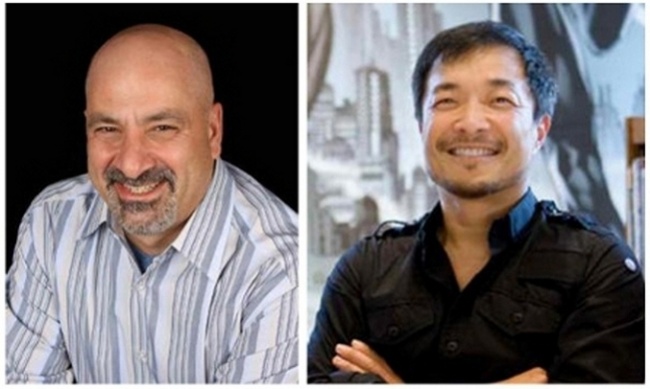
The 'Mad Magazine' Decision, Content Trends, Mass Market Expansion, and Top 2019 Picks
Posted by Milton Griepp on August 7, 2019 @ 10:58 am CT
MORE COMICS
Story Inspired by H.G. Wells' 'The Invisible Man' Returns in Hardcover
July 3, 2025
First published by Vertigo, Lemire’s reimagining of the classic H.G. Wells novel The Invisible Man will return in a new hardcover edition.
From Marvel Comics
July 3, 2025
Check out the first three covers of the new series, which sees the God of Thunder reborn as a mortal.
MORE NEWS
New 'Flesh & Blood TCG' Booster Set
July 3, 2025
Legend Story Studios announced Super Slam, a new Flesh & Blood TCG booster set.
New Riff of the Classic Game of War from Chip Theory Games
July 3, 2025
Chip Theory Games will release Fight Five, a new card game, into retail.



